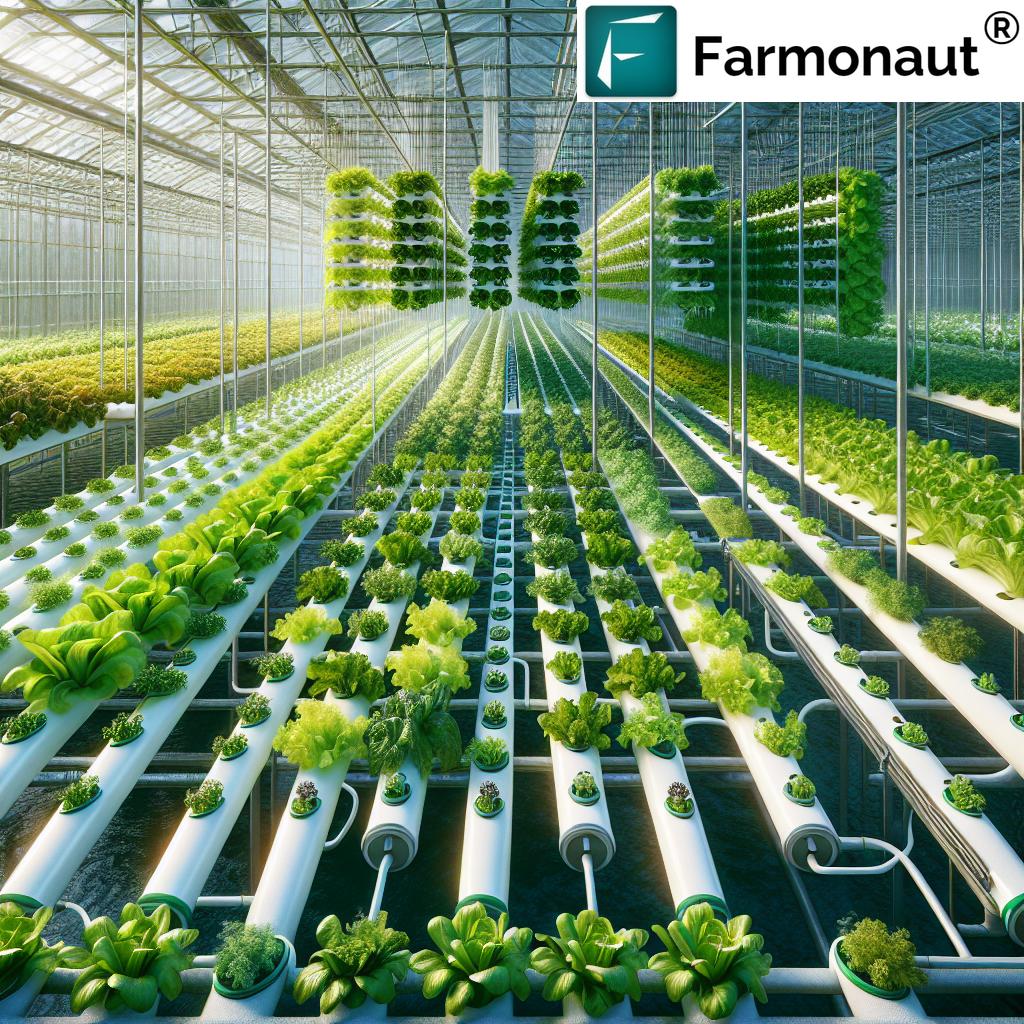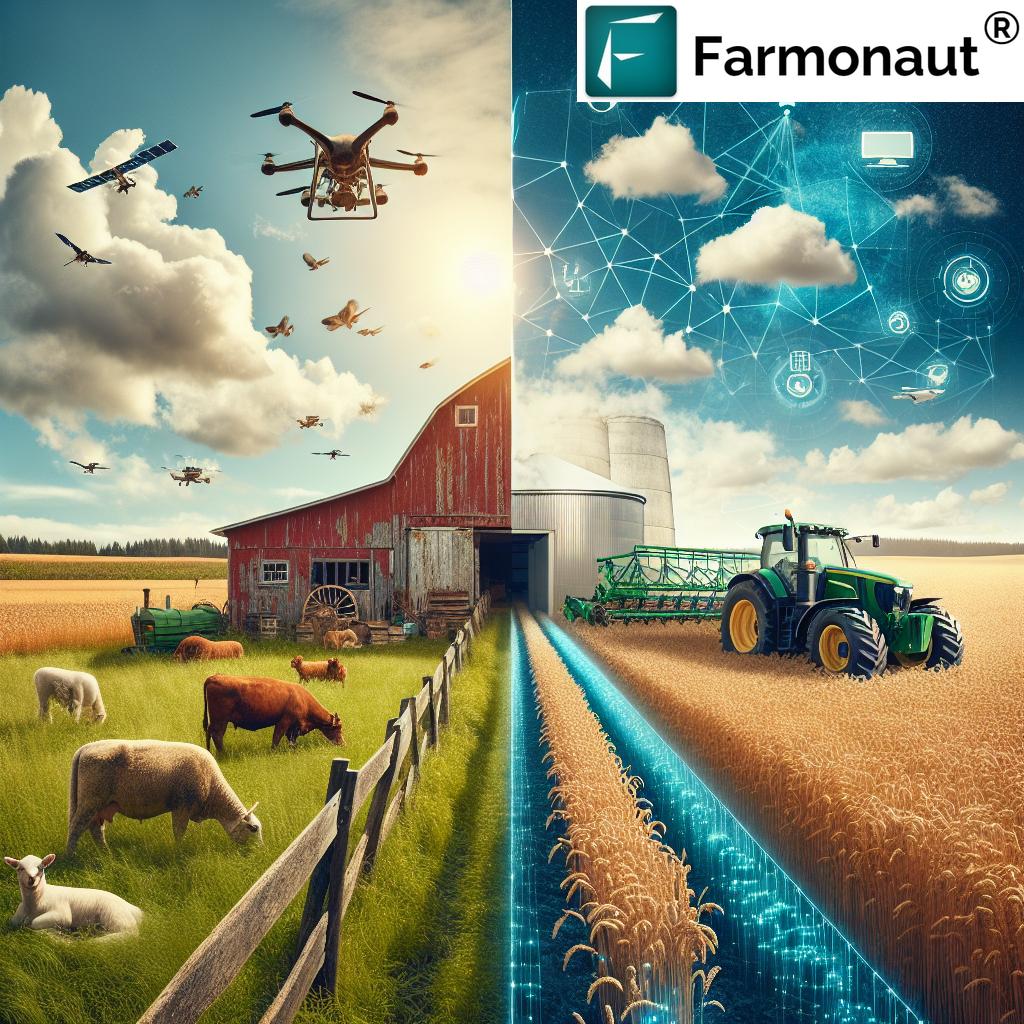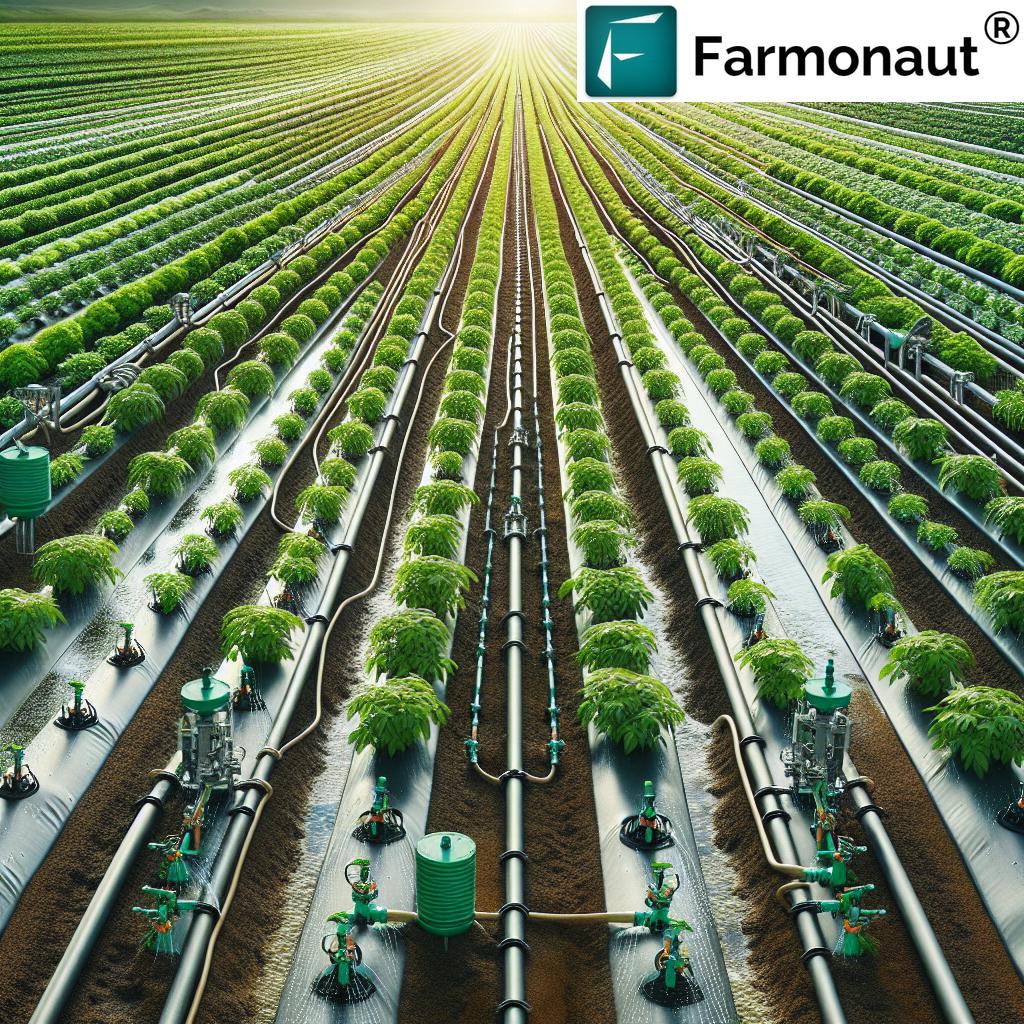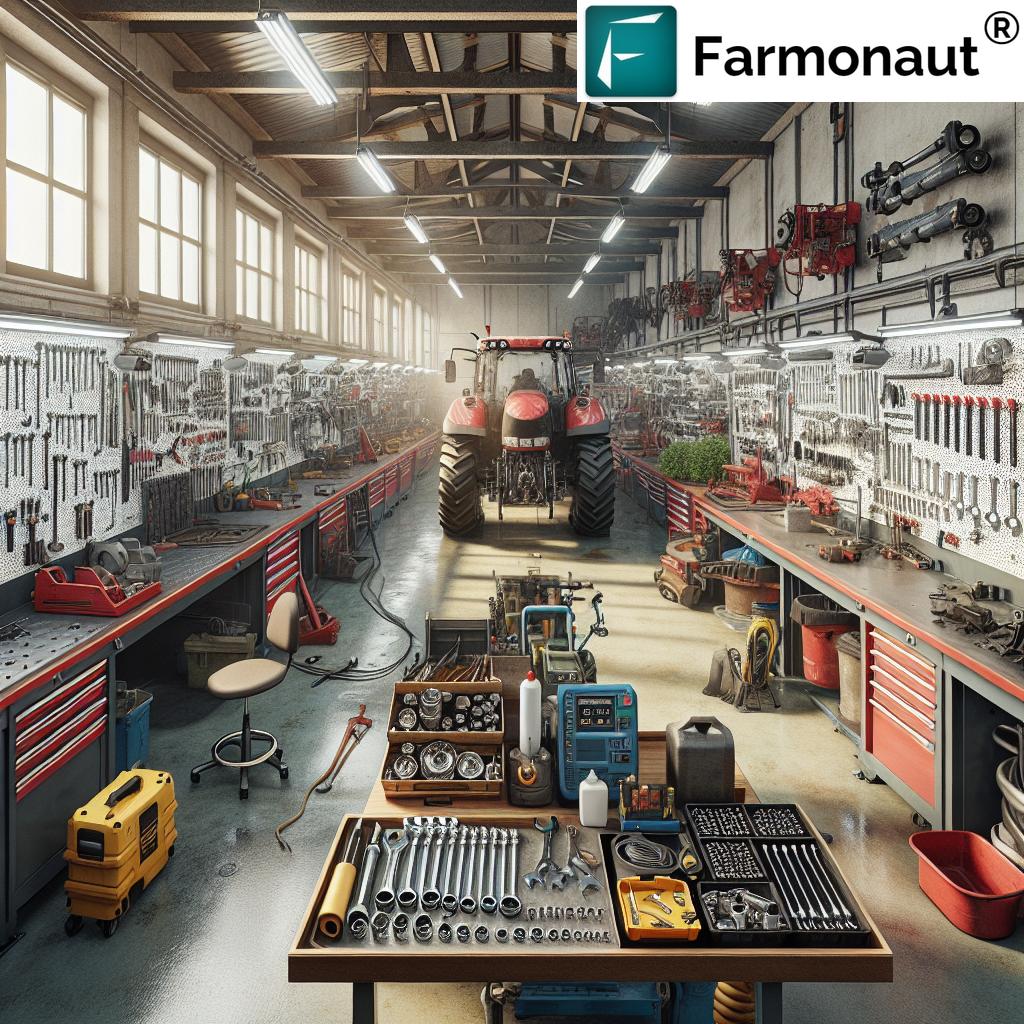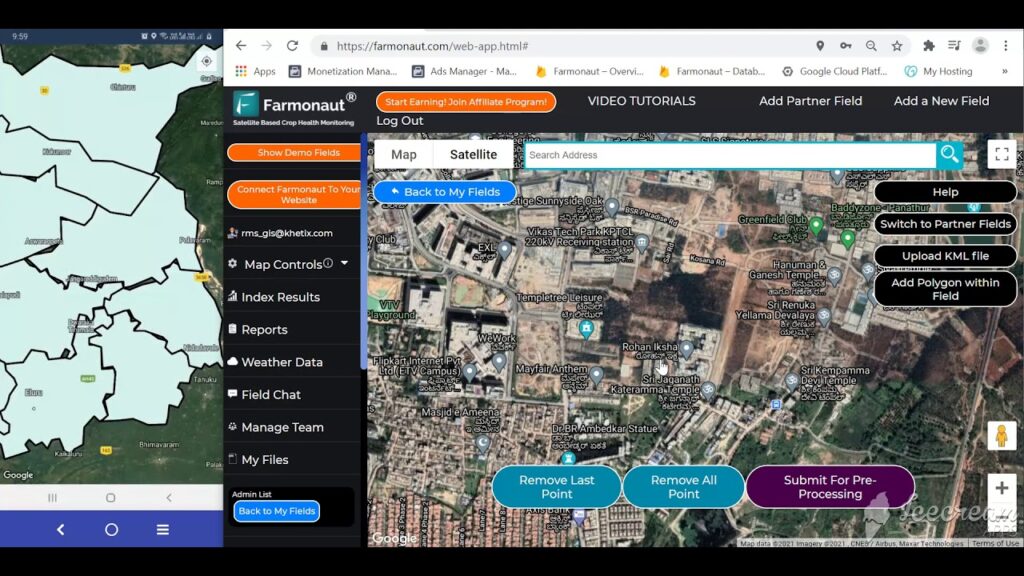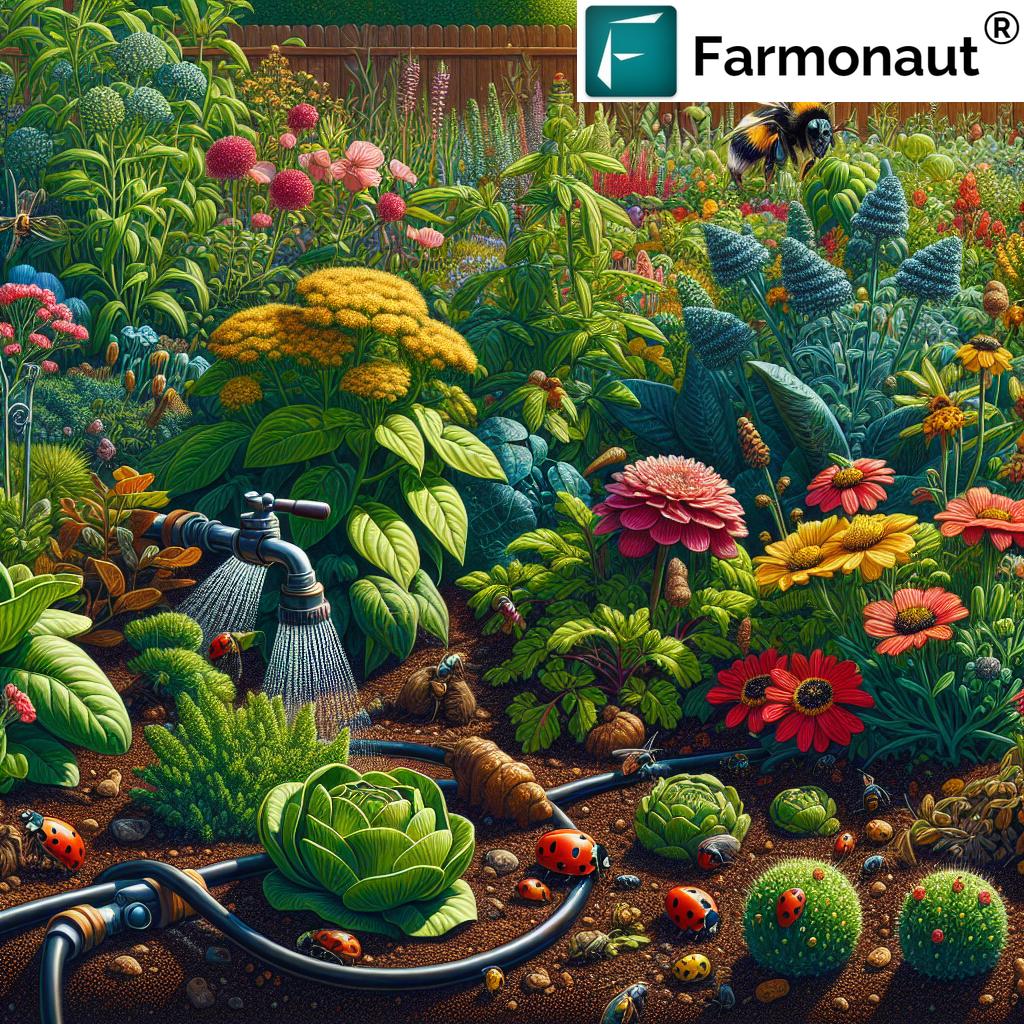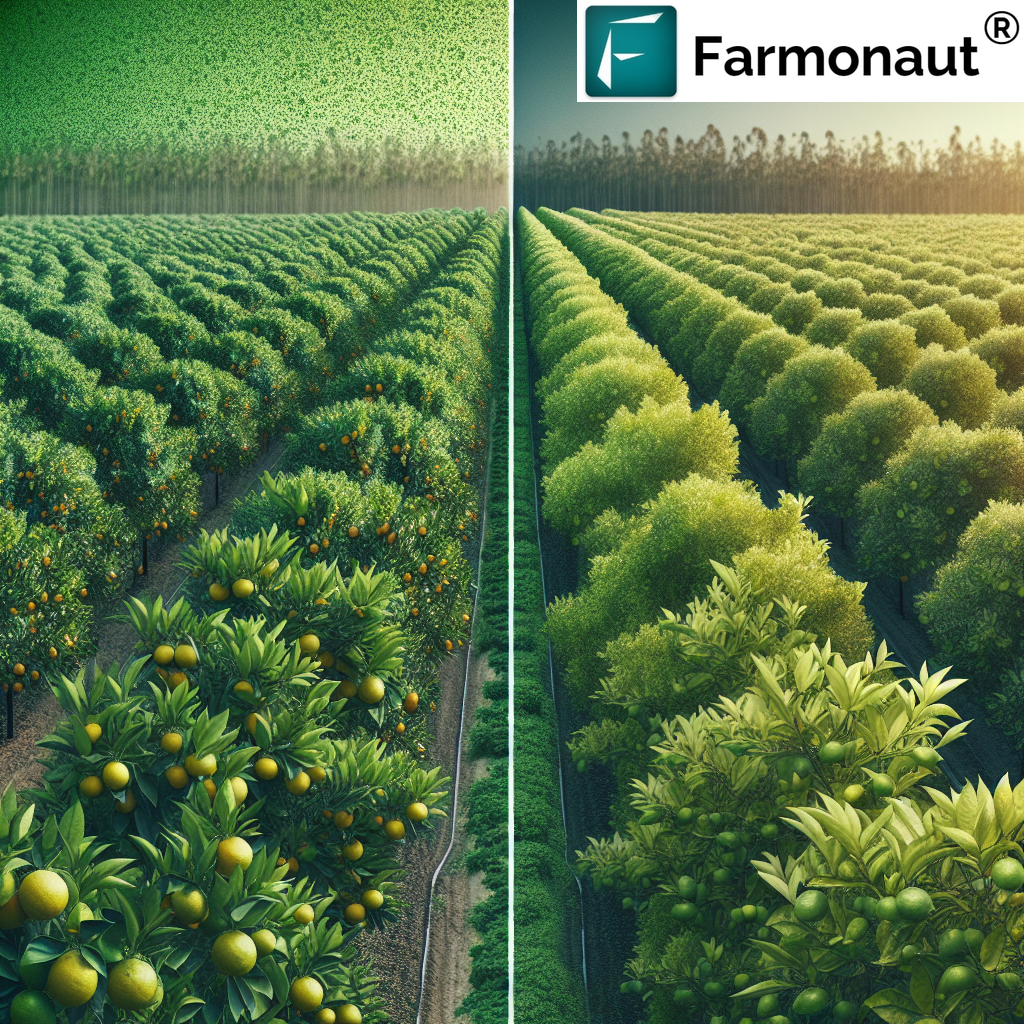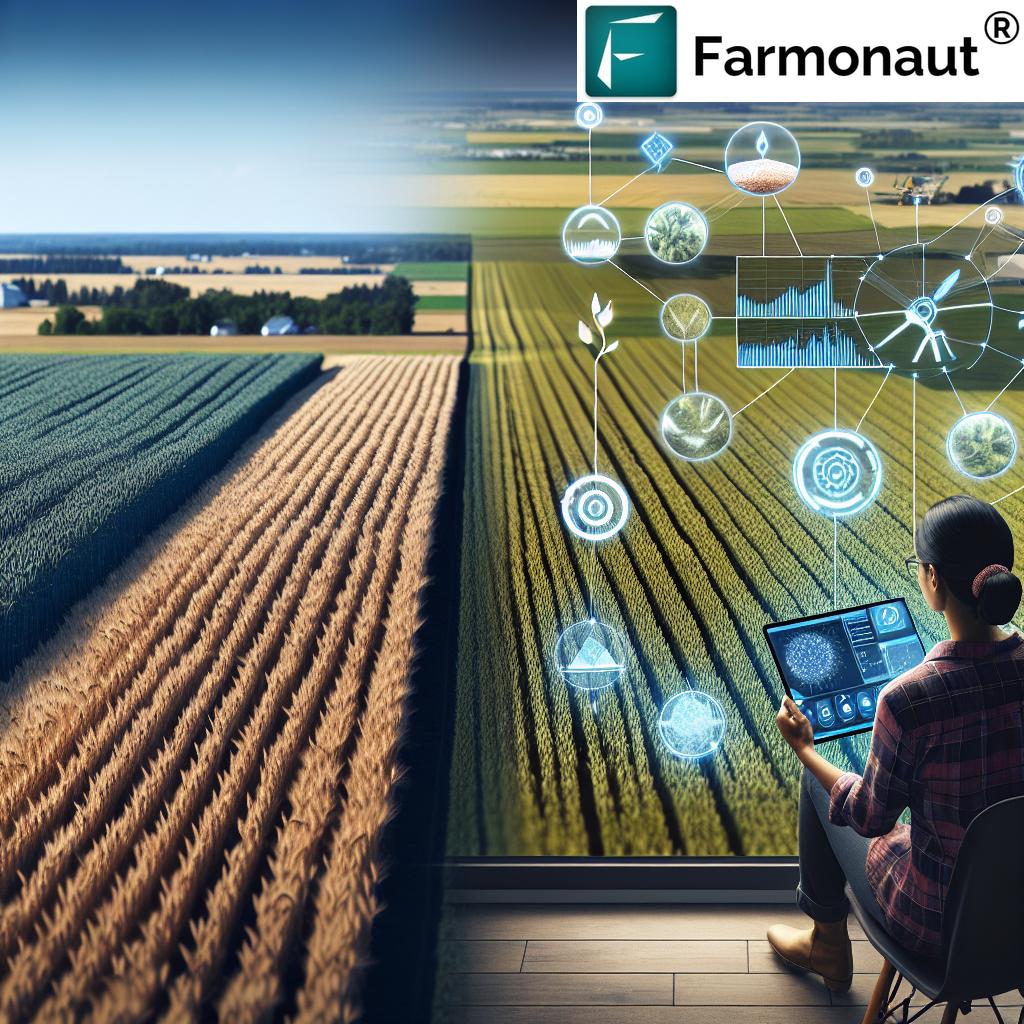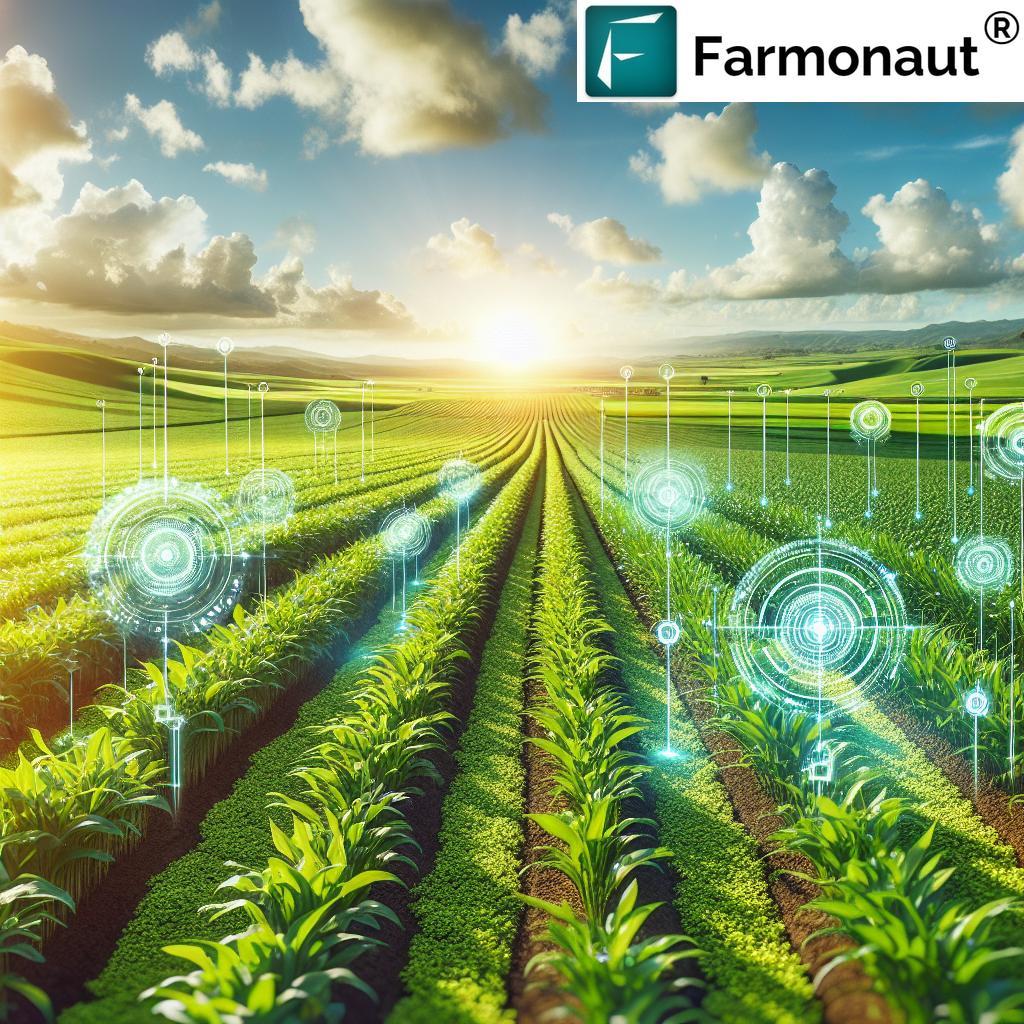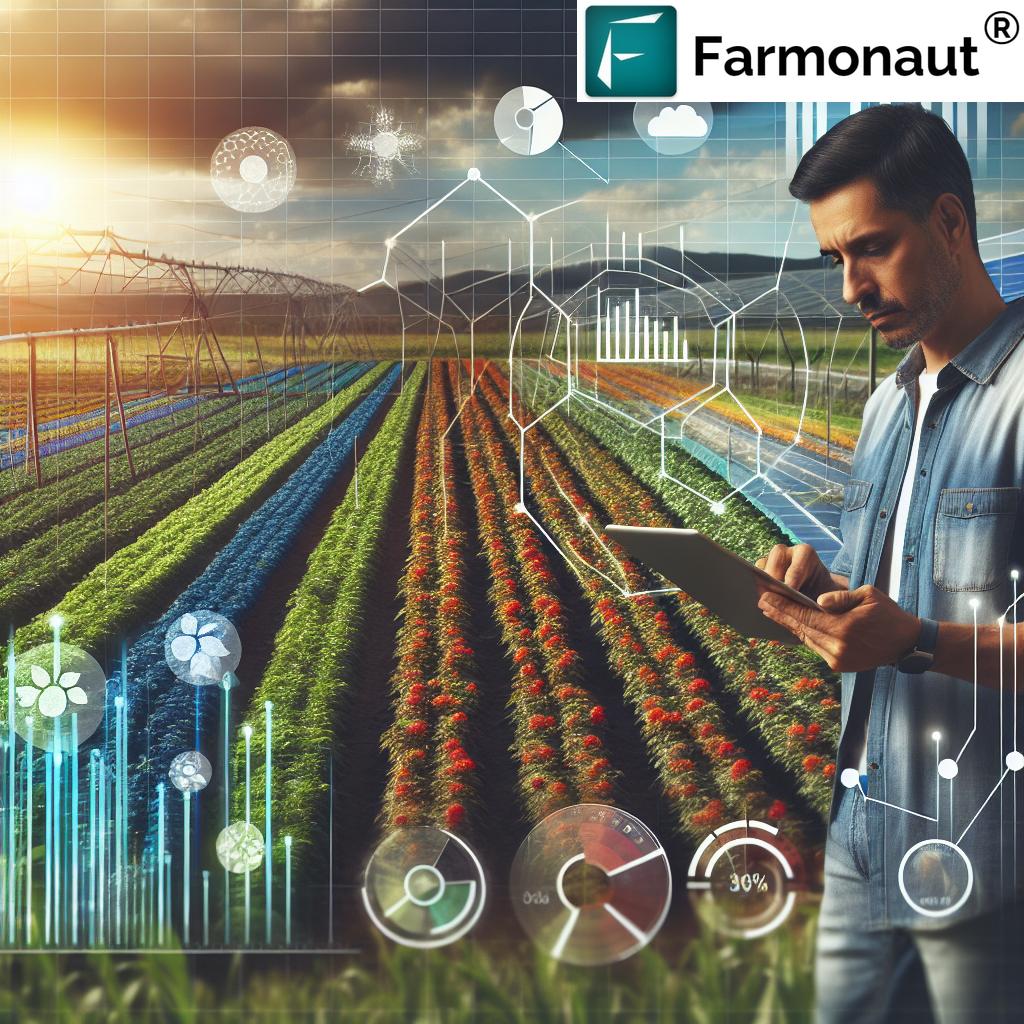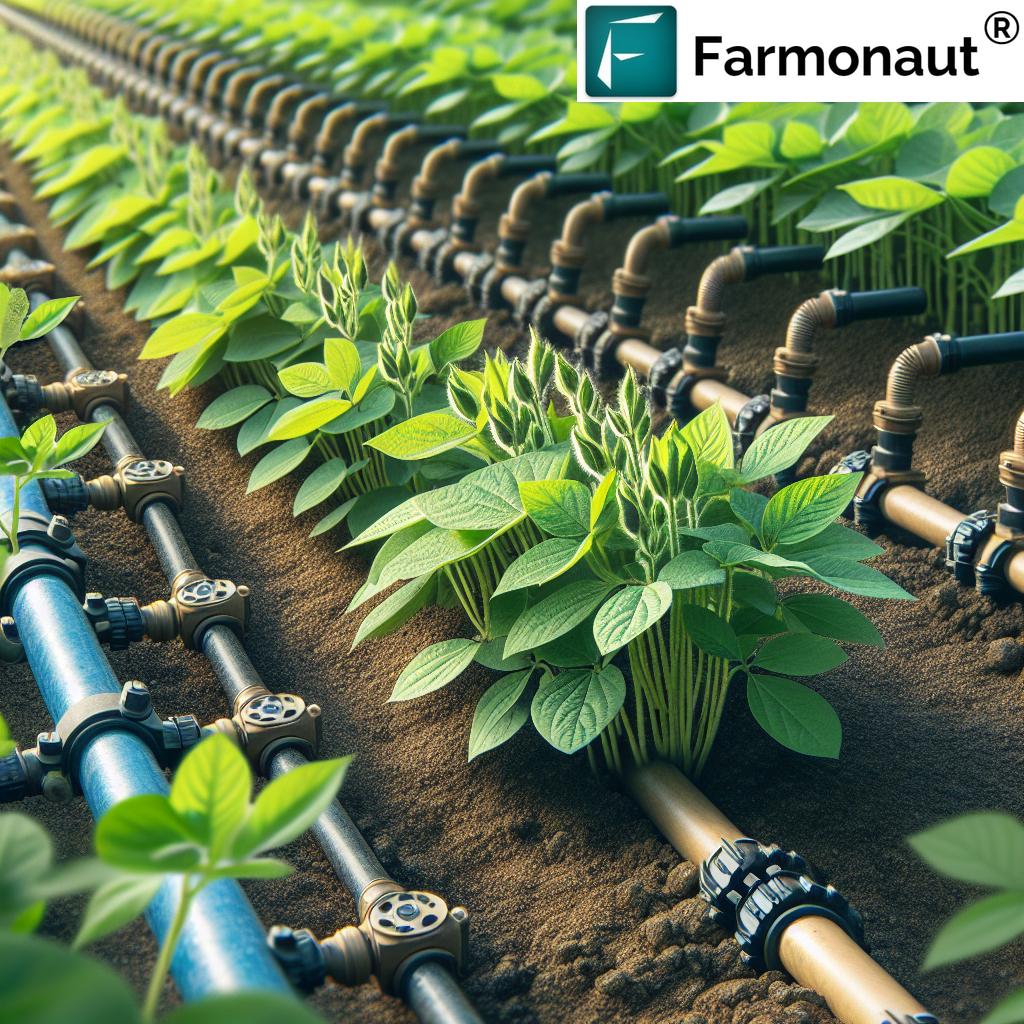Liquid Farming Hacks: 7 Jaw-Dropping Methods Revealed
Table of Contents
- Introduction to Liquid Farming
- Trivia: Hydroponic Efficiency
- What Is Liquid Farming?
- Comparison Table: 7 Liquid Farming Methods
- 1. Hydroponics: Efficient Soil-Free Plant Cultivation
- 2. Aquaponics: Sustainable Water Recycling with Fish
- 3. Aeroponics: The Science of Aeroponic Plant Growth
- 4. Vertical Farming Technology: Building Efficient Urban Agriculture Solutions
- 5. Recirculating Aquaculture System (RAS)
- 6. Integrated Floating Cage Aquageoponics System (IFCAS)
- 7. Liquid Nanoclay for Arid Regions
- Trivia: Vertical Farming Yields
- Advantages of Liquid Farming Practices
- Challenges and Considerations
- Leveraging Farmonaut for Liquid Farming Efficiency
- FAQ: Liquid Farming Practices
- Conclusion
“Hydroponic systems use up to 90% less water than traditional soil farming methods.”
As our global population escalates and environmental concerns transform the way we approach agriculture, innovative farming methods have come to the forefront. Liquid farming—the cultivation of plants and aquatic organisms using water-based mediums—combines techniques like hydroponic farming systems, aquaponics systems for sustainable agriculture, vertical farming technology, and more. These systems help us maximize resource efficiency, enhance yields, and create sustainable urban agriculture solutions.
In this blog, we’ll explore seven jaw-dropping liquid farming hacks that push the boundaries of modern agriculture. Our mission is to inform and inspire by outlining the core principles, advantages, and real-world implications of these practices. Let’s uncover how liquid farming can transform not only traditional fields but also urban and arid landscapes.
What Is Liquid Farming?
Liquid farming refers to the cultivation of plants and aquatic organisms using water-based mediums instead of traditional soil. This approach leverages innovative technologies to optimize resource efficiency, increase yields, and promote sustainability across various agricultural systems. Our modern agriculture landscape is rapidly evolving, integrating advanced hydroponic, aquaponic, and aeroponic farming systems, making liquid farming a powerful solution for farmers worldwide.
With techniques such as deep water culture (DWC), nutrient film technique (NFT), vertical farming technology, and integrated floating cage aquageoponics system (IFCAS), we are witnessing a revolution in how food is grown, delivered, and consumed. These liquid farming hacks embrace efficient water use, precise nutrient delivery, and new ways of maximizing spatial and environmental potential.
Comparison Table: 7 Innovative Liquid Farming Methods
To help you make informed decisions, here’s a quick comparative overview of liquid farming methods—from their core principles and usage to projected benefits and challenges.
| Farming Method | Core Principle | Estimated Water Savings (%) | Yield Increase (vs. Traditional) | Initial Setup Cost (USD, est.) | Space Efficiency (Yield/m²) | Notable Advantages |
|---|---|---|---|---|---|---|
| Hydroponics | Plants grown without soil, receiving precise nutrients via water-based mediums. | Up to 90% | 20%–50% | $2,000–$10,000 | ~50–100 kg/m²/year | Precise nutrient control, higher yields, less water use. |
| Aquaponics | Combines aquaculture & hydroponics; fish waste fertilizes plants; plants clean the water. | Up to 90% | Up to 30% | $4,000–$15,000 | ~40–80 kg/m²/year | Closed-loop, organic, dual output (fish & plants). |
| Aeroponics | Roots suspended in air & misted with nutrient-rich solution. | Up to 95% | Up to 70% | $5,000–$20,000 | ~80–150 kg/m²/year | Excellent water efficiency, rapid growth, minimal medium waste. |
| Fogponics | Uses ultrasonic foggers to deliver ingestible nutrients through water vapor to roots. | Up to 96% | Up to 80% | $7,000–$18,000 | ~120–170 kg/m²/year | Finest nutrient delivery, very high oxygenation. |
| Deep Water Culture (DWC) | Plant roots immersed in highly oxygenated, nutrient-rich water. | Up to 90% | Up to 60% | $1,500–$7,000 | ~60–110 kg/m²/year | Simple setup, great for leafy greens. |
| Nutrient Film Technique (NFT) | A thin film of nutrient solution flows over the plant roots in sloped channels. | Up to 90% | Up to 40% | $2,000–$8,000 | ~70–120 kg/m²/year | Low water/nutrient waste, fast growth, scalable. |
| Vertical Hydroponics | Plants stacked in vertical layers, using hydroponic or aeroponic systems. | Up to 95% | Up to 200% (per area) | $8,000–$30,000 | ~200–700 kg/m²/year | Ultra-high efficiency, urban-friendly, continuous harvest. |
1. Hydroponics: Efficient Soil-Free Plant Cultivation
Hydroponic farming systems are at the heart of liquid farming innovations. This method involves growing plants without soil, relying instead on water-based mineral nutrient solutions. By delivering nutrients directly to plant roots, we ensure higher growth rates, faster harvest cycles, and resource efficient agriculture.
How Hydroponic Systems Work
The essential principles of hydroponic farming systems are simple: plants are supported by an inert medium—like perlite, coco peat, or clay pellets—while their roots are bathed in a carefully balanced nutrient solution. This system achieves:
- Precise nutrient control—customizing the mix for each plant species and growth stage
- Water conservation—by recirculating the water, these systems use up to 90% less water compared to soil farming
- Accelerated plant growth—plants grown hydroponically mature up to 25% faster
- Higher yields—greater density and fewer disease risks allow for repeated harvests
Common Hydroponic Methods
- Nutrient Film Technique (NFT): A shallow stream (“film”) of nutrient solution is continuously circulated past plant roots in a sloped channel, providing access to water, nutrients, and oxygen. This technique is ideal for fast-growing, shallow-rooted crops such as lettuce and herbs.
- Deep Water Culture (DWC): Plants are placed into a floating platform or net pots so their roots hang directly into oxygenated nutrient-rich water. Air stones or diffusers help prevent root failures by maintaining high oxygen levels, encouraging lush plant growth with minimal disease risk.
- Aeroponics: A more advanced form where roots are suspended in air and misted periodically with a fine nutrient solution. This ensures both maximum oxygen and precise nutrient delivery for rapid, healthy growth.
Hydroponics not only reduces water usage and chemical fertilizer consumption, but also allows farmers to grow crops anywhere—be it urban rooftops or abandoned industrial land.
2. Aquaponics: Sustainable Water Recycling with Fish
Aquaponic systems for sustainable agriculture represent the optimal integration of aquaculture and hydroponics. In this closed-loop system, the waste generated by fish or other aquatic animals is converted by beneficial bacteria into plant-available forms. The plants absorb these nutrients for growth, while simultaneously filtering and purifying the water, which is then recirculated back to the fish tanks.
Key Components of Aquaponics
- Fish tanks: Home to species like tilapia, koi, and catfish, which are commonly used in aquaponic setups due to their hardiness and adaptability.
- Biofilters: Contain colonies of beneficial bacteria that convert ammonia from fish waste into plant-usable nitrates, supporting a balanced, symbiotic environment.
- Plant beds: Where lettuce, tomatoes, herbs, and more are grown, usually via floating rafts, NFT, or media beds for optimal root exposure.
The advantages of aquaponics include:
- Significant reduction in chemical fertilizers—natural fish waste is the main nutrient source
- Minimal water usage—the system recirculates water, only requiring occasional top-offs
- Dual income streams—from both fish and plant production
- Suitability for urban settings—as no large arable land footprint is required
3. Aeroponics: The Science of Aeroponic Plant Growth
Aeroponic plant growth defines the leading edge of liquid farming innovation. In aeroponics, plants are grown with their roots suspended in a closed or semi-closed environment and nourished by misting their roots with a precisely calibrated nutrient solution.
Why Aeroponics?
- Maximum oxygenation: Roots access plenty of oxygen (more than in water or soil), which promotes faster growth and healthier plants.
- Efficient nutrient delivery: Misting offers even, frequent feeding, giving plants optimal nutrient absorption.
- Minimal water usage: Aeroponics uses even less water than most hydroponics (resource efficient agriculture at its best).
However, aeroponic farming requires vigilant monitoring and maintenance, since any interruption in misting (due to power cuts or pump failures) can quickly lead to root desiccation and plant loss.
4. Vertical Farming Technology: Building Efficient Urban Agriculture Solutions
“Vertical farming can yield up to 10 times more crops per square meter than conventional agriculture.”
Vertical farming technology takes advantage of unused urban space by stacking crops in layers, often inside climate-controlled greenhouses or retrofitted warehouses. This method is not just about saving land; it’s about producing more food closer to consumers, reducing transport emissions, and enhancing food security.
Why Choose Vertical Farming?
- Efficient resource use: Cultivate plants up to 200% more efficiently per square meter by combining hydroponics, aeroponics, and smart lighting.
- Reduced land footprint: Unlock agricultural production even in urban regions where arable land is minimal or non-existent.
- Year-round production: Full environmental control allows for multiple crop cycles, unaffected by external weather or seasonal changes.
Many vertical farms use hydroponics or aeroponics systems for efficient, soil-free farming. Whether for local restaurants, supermarkets, or direct urban consumers, this solution is revolutionizing our modern food systems.
5. Recirculating Aquaculture System (RAS)
The recirculating aquaculture system (RAS) is a state-of-the-art technology for raising aquatic organisms (mainly fish) in controlled tanks where water is continuously filtered and recirculated. This system drastically reduces water usage and allows for high-density fish farming regardless of available land.
Major Benefits of RAS
- Water conservation: Up to 90% less water than traditional open-pond systems
- Environmental protection: Minimized nutrient and waste discharge into surrounding ecosystems
- Biosecurity: Closed systems reduce the risk of disease outbreaks
- Operational flexibility: These systems offer site selection freedom and year-round production
While RAS systems have high initial investment and complexity, their efficiency and scalability make them the gold standard for sustainable aquaculture.
6. Integrated Floating Cage Aquageoponics System (IFCAS)
The integrated floating cage aquageoponics system (IFCAS) is an innovative method that originated in Bangladesh for small-scale, resource-limited farmers. Here, fish are raised in floating cages on water bodies, and their waste is repurposed to fertilize plants grown in the same water system—maximizing productivity and sustainability.
How IFCAS Works
- Fish cages: Hold fingerlings or mature fish for local consumption or sales
- Floating plant beds: Utilize geoponic material (like soil or compost mats) on the cage rafts so vegetables and herbs can thrive using dissolved nutrients from the fish water
IFCAS is an excellent solution for densely populated or flood-prone regions with limited arable land, enhancing both food security and resource efficiency.
7. Liquid Nanoclay for Arid Regions
Liquid nanoclay (LNC) is a groundbreaking technology that enables agriculture in desert and arid regions. It works by mixing nanoclay particles suspended in water and spraying this mixture onto sandy soil. The result? The sand turns into a water-retentive, fertile substrate that supports plant growth where nothing could previously thrive.
Why LNC is Transformational
- Transforms infertile sand into arable land, enabling agriculture in deserts
- Increases water retention by up to 50%, curbing irrigation water loss
- Boosts food security in regions like the UAE, providing sustainable cultivation opportunities in previously barren landscapes
Liquid nanoclay for arid regions is a pivotal innovation for countries facing severe water and land scarcity, empowering them to establish resilient agricultural systems.
Advantages of Liquid Farming Practices
- Resource Efficiency: Up to 95% less water usage compared to soil-based methods; efficient land use via vertical farming technology
- Sustainability: Integrated, closed-loop systems reduce or eliminate chemical fertilizers and pesticides, promoting sustainable agriculture
- Urban Agriculture Solutions: Hydroponics, aquaponics, and vertical setups enable food production in dense cities
- Reduced Environmental Impact: Modern liquid farming solutions decrease runoff, greenhouse gas emissions, and transportation costs
- Year-round Deliverability: Controlled environments mean consistent crops regardless of season or climate volatility
Challenges and Considerations in Liquid Farming
- Initial Investment Costs: Many systems, particularly RAS and vertical farms, require significant upfront capital, which may deter small-scale farmers
- Technical Expertise: Running and maintaining automated liquid farming setups requires specialized knowledge—hydroponic chemistry, fish health, environmental controls, and data analysis
- System Monitoring & Maintenance: Continuous monitoring is vital; pump, nutrient, and environmental failures can cause rapid crop or fish loss
- Energy Demands: Larger operations, especially those using artificial lighting, can have higher electricity footprints if renewable sources aren’t used
- Ongoing Skill Development: Since technologies evolve quickly, farmers must stay updated to avoid system failures and maximize efficiency
Leveraging Farmonaut for Liquid Farming Efficiency
As liquid farming grows more sophisticated, integrating advanced technology is crucial. Farmonaut stands out as a pioneering agricultural technology company—not a farm equipment or input seller, or regulatory body, but a reliable platform for satellite-based farm management.
Why Choose Farmonaut?
-
Real-time Satellite Crop Health Monitoring:
Farmonaut’s platform leverages multispectral satellite imagery to deliver up-to-date details on crop health (including NDVI), soil moisture, and pest or disease risk. This empowers farmers to optimize irrigation and nutrient delivery, boosting yields and reducing resource losses. -
Jeevn AI Advisory:
Farmonaut’s AI-based advisory system provides actionable recommendations—customized for hydroponic, aquaponic, and urban agriculture setups—covering weather forecasting, nutrient regimes, and system troubleshooting. -
Product Traceability:
For those using liquid farming methods for specialty exports or urban value chains, Farmonaut’s blockchain-based traceability
enhances consumer trust, ensuring transparency across the supply chain. -
Fleet and Resource Management:
For agri-enterprises transitioning to automated vertical or aquaponic farms, Farmonaut’s fleet and logistics tool
streamlines machinery deployment, reduces operational costs, and maximizes coverage. -
Carbon Footprint Tracking:
If your goal is sustainability, Farmonaut’s carbon footprint feature
provides transparent, real-time emissions data for compliance and continuous improvement. -
Large-Scale Farm Management:
For expanding, Farmonaut’s dashboard and remote sensing tech
scale from small holdings to enterprise farming with seamless monitoring and reporting. -
API & Developer Integration:
For tech-driven ag startups, discover Farmonaut’s satellite & weather API and the full developer documentation for integrating their powerful analytics into your custom software. -
Crop Loan and Insurance Verification:
Financially empower farmers with satellite-backed crop verification, speeding up loan approvals and minimizing insurance fraud risk.
Ready to take your hydroponic, aquaponic, or urban vertical farm to the next level?
FAQ: Liquid Farming Practices
-
What are the main differences between hydroponic and aquaponic systems?
Hydroponic systems use water and nutrient solutions to directly feed plants, while aquaponic systems combine fish rearing and plant growing. In aquaponics, fish waste becomes the nutrient source for plants, and plants help filter and clean the water for the fish. -
Is liquid farming suitable for small-scale farmers?
Yes, many liquid farming techniques—from nutrient film technique (NFT) to floating cage systems—can be scaled down. Recent innovations and support platforms like Farmonaut make setup and ongoing management more accessible. -
How much water can I save by switching to hydroponics?
Hydroponic systems can reduce water usage by up to 90% compared to soil-based farming, thanks to recirculation and precise delivery. -
Does liquid nanoclay work in all climates?
Liquid nanoclay is most effective in arid regions where sandy soils dominate. It addresses water retention challenges, making it a game-changer for desert agriculture. -
What crops are most suitable for vertical farming?
Leafy greens (lettuce, spinach), herbs (basil, cilantro), strawberries, and some microgreens excel in vertical hydroponic or aeroponic setups. -
How does Farmonaut support precision agriculture?
Farmonaut delivers real-time satellite data and AI-based insights for crop health, irrigation management, pest/disease monitoring, and sustainable resource allocation, helping optimize yields while minimizing input and labor expenses.
Conclusion: The Future of Liquid Farming Technologies
Our exploration of liquid farming hacks has revealed a landscape rich in possibility. Techniques such as hydroponic farming systems, aquaponics systems for sustainable agriculture, aeroponic plant growth, and vertical farming technology represent more than just innovations—they are solutions for the next generation of food security, resource efficiency, and urban agriculture.
By integrating real-time data analytics, satellite monitoring, and AI-driven advisory through platforms like Farmonaut, we can overcome water and land constraints, minimize environmental harm, and deliver fresh, sustainable, nutrient-rich food to communities worldwide. The opportunity to cultivate crops—anywhere, any time, in any climate—has never been more accessible.
As we collectively move forward, embracing modern agricultural practices will be essential for farmers, entrepreneurs, and policymakers. By leveraging the right combination of systems, technologies, and data-driven insights, we can shape a more abundant, resilient future for us all.


